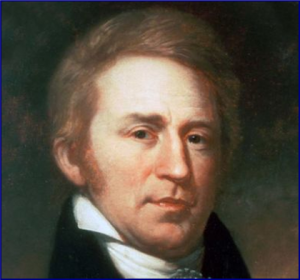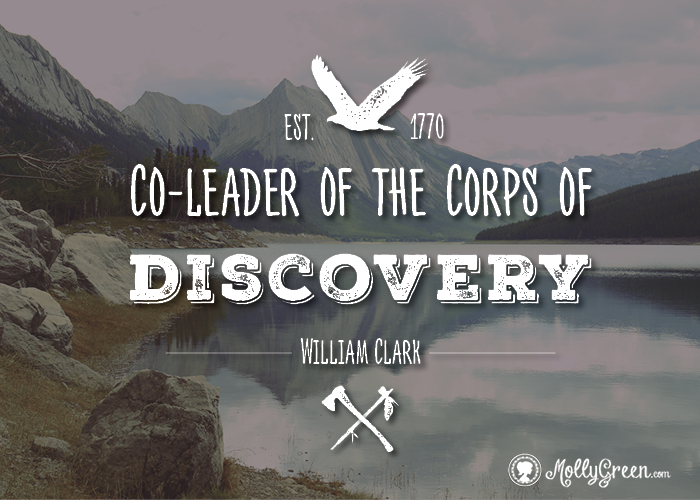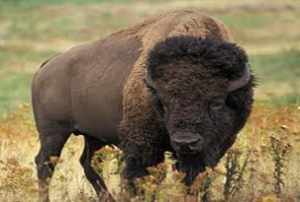Co-leader of the Corps of Discovery (1803-1806)
By Eric Osborn

Being known by President Jefferson and a good friend of Captain Meriwether Lewis, he was chosen to become a co-leader of the famous Corps of Discovery, commissioned by Jefferson to explore and map the Louisiana Territory recently purchased from France on March 10, 1804 (doubling the size of the United States overnight).
They assumed the trip would take six months to a year to get there and back. However, they underestimated the labors of river travel and they grossly underestimated the size of the Rocky Mountains! It ended up taking almost three years to get there and back.
Along the way they discovered:
- Huge herds of bison. At times they took up the entire horizon.
- Grizzly bears! This new and fearsome predator plagued them up to four times a day (especially in the Montana area).
- Massive mountains and fertile plains.
- Indians of every kind. From the gentle Oto, Missouri, Mandan, Hidatsa, Shoshone, and Nez Perce, to the fierce Sioux and Blackfeet.
Their plan was to travel up the Missouri river. French trappers and Indians alike had indicated the Missouri just about traversed the entire territory. So up they went, making observations, sketching maps and taking samples of plant and animal life along the way. Some 178 plants and 122 animals were recorded for the first time. However, they were going against the current and many times had to drag their large keel boat and canoes by hand over the sand bars and low water areas of the mighty river. It really was slow and back-breaking work.
Many of the Indian nations they met were friendly and helpful, having had contact with European traders for many years. The farther they moved west the more hostile some of the tribes could be. Still, the voyage would have been a disaster many times if it had not been for the help and information Indians provided along the way.
Crossing the Rocky Mountains proved to nearly be their undoing. They had heard of some mountains along the way but their description was seriously off. The Rockies went on for as far as they could see. Undaunted they pushed on but nearly starved and froze to death. Finally, they emerged on the other side and were sheltered by a friendly group of Nez Perce Indians who helped them launch out on the Columbia River where they eventually made it to the Pacific Ocean on November 7, 1805.
After the expedition, Clark became Governor of the Missouri Territory for seven years. He later served with the Bureau of Indian Affairs, always striving to see that the Indians were treated fairly. He was good at his job and was highly respected. William Clark died on September 1, 1838. But the maps, knowledge, and friendships he made during the expedition proved to be extremely important to the young nation.
If you would like to learn more about Captain William Clark and the Corps of Discovery see:
- Rod Gragg, Lewis and Clark on the Trail of Discovery, Rutledge Hill Press, Nashville Tennessee. 2003. (An excellent book with many maps, illustrations and journal pages).
- Meriwether Lewis and William Clark—Lewis and Clark’s Historic Trail
- Landon Y Jones, William Clark and the Shaping of the West. Hill and Wang Publishers. 2004.








